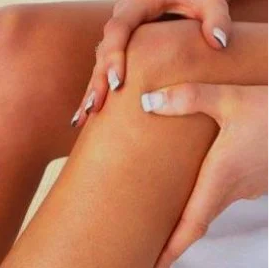
Knee pain is a common symptom, reported the disorders in the body – the appearance of the disease in the joints or simply the increased load on the feet.
It is difficult to find the man, has never experience the pain in the knees in a particular period of life. Discomfort, clicks, or pain of variable intensity in the joints of the knee occur both in adults and in children, due to a variety of reasons. The older is the person, the more the likelihood of the occurrence of various diseases, the first symptom is pain in the knees. It is because of the age of the organism: the slowing down of the metabolic processes of the wear and tear of the cartilage of the joints, of the accession of other musculoskeletal problems, the blood vessels, the nerves are to the.
The complexity of the anatomical structure, set of structures, and have significant costs, and often the congestion, the joints of the knees are very vulnerable. Damage to any element of the structure, for example, serous, leading to the violation of the motor function of the knee and, as a result, the pain syndrome. The ligaments and menisci are considered the most vulnerable, they are wounded in 80-85% of cases.
Anatomical structure of the knee
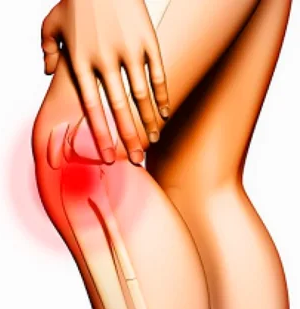
The knee consists of the articulation of the knee, the distal end of the femur are two condyles and under decondyles, the tibia of a tube of bone, muscles, nerves are to the, blood vessels, ligament of the device, the kneecap (patella), the joint capsules and menisci.
The knee joint is one of the major joints of the body. The top suits the femur. The articular surfaces of its lateral (outer) and medial (inner) condyles articulate with the patella and the tibia fractured. The menisci, which represent the connective tissue-the cartilage, serve as shock absorbers of the joint. Thanks to them, occurs the rational distribution of the weight of the person on the tibial plateau and increases the stability of the joint. Thin, double head, paliperidonesee and other muscles to synchronize capsule-ligamentous structure, allowing the motor activity of the knee joint.
The elements of the tribe are connected to each other by many ligaments. The inside of the joint there are two ligaments, behind and in front. Podmyshalsky bedernau the bones are connected with the fibula and the tibia bone collateral ligaments. The oblique ligament, and popliteus is located at the rear of bursa, the knee joint. From a series of joint cavities secrete a primary capsule, synovial membrane, does not communicate with the joint. The vascularization of the elements of the tribe is thanks to a network of blood vessels, and the innervation – nerve ber.
The causes of pain in the knees
There are many causes of pain in the joints of the knees, which can be divided into several groups.
Traumatic injuries to the elements of the tribe:
- The injury to the knee. Following the rupture of a blood vessel occurs local bleeding in the soft tissues of the hip. Redness is swelling, the defeat of nerve endings causes the pain, the difficulty of movement.
- Full or a partial tear of the ligaments. The most frequently diagnosed form of partial violation of the integrity of the internal lateral ligament, resulting in an excess displacement of the tibia towards the outside.
External ligament torn from the inside out. This occurs due to the deviation of the tibia on the inside, the exposure of the legs, for example. The rupture of cruciate ligaments inevitably accompanied by a hemarthrosis.
A complete separation of the two ligaments are often combined with damage of the articular capsule, the tear of the medial meniscus. This injury causes an excess of mobility of the knee joint, accompanied by severe pain the intensity of which depends on the extent of the fracture.
- Hemarthrosis of the knee – rupture of blood into the cavity of the joint. It happens in traumatic and non-traumatic nature. Traumatic hemarthrosis is observed during the rupture of the menisci, complete or incomplete, ruptures of ligaments intra-articular diseases, bruises area of the knee. The non-traumatic option is one of the symptoms of diseases characterized by an increased fragility of blood vessel walls, or the violation of the coagulation of the blood. These include hemophilia, scurvy, the severe forms of hemorrhagic diathesis. Accumulated in the joint cavity from the blood, tightens tissues, disrupting the blood circulation in the. Special pigment – hemosiderin – affects the ligaments, hyaline cartilage, bag synovial, leading to the loss of their elasticity. The result of the defeat of the joint bursa is the swelling of its villi and enhanced the production of synovial fluid. The result ritres is degeneration and destruction of the joint.
- Knees miniscope – violation of the integrity of the menisci of the knee joint. When the lateral face of the form of damage to the lateral meniscus, when the median house. It is one of the most common, but difficult to be able to diagnose lesions of the knee joint. In an area at risk of the disease are not only the athletes, responsible of intensive training, but also ordinary people. A torn meniscus can occur a strong unusual movement during the rotation of the torso, the exposure of the feet, high impact on the knee.
- Dislocation of the patella – pathological shift of the patella. The trauma is diagnosed is not more than 0.7% of the cases, the total number of sprains. Occurs most often external of the dislocation, the less internal, very rarely vertical or torsional. When incomplete dislocation of the patella is determined over the end lateral (outer) condyles, in the full outside of the lateral condyle.
- Closed or open diseases of the knee joint, the upper part of the phase of the bone of the leg or the bottom of the bedernau of the os. These injuries are often combined with lesions of the soft tissues of the knee, causing a massive hemorrhage, excessive mobility in the area of the knee, its distortion.
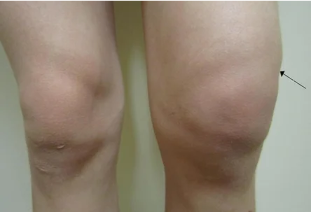
Inflammatory diseases and degenerative dystrophic-dystrophic joint disease with elements of the tribe:
- Arthritis – inflammation of the defeat of the knee joint. A similar mechanism the development of the pathology observed during osteoarthritis, Ankylosing spondylitis, rheumatoid arthritis, gout (with deposit of urate in the joints).
- Osteoarthritis (gonarthrosis) with the defeat of the knee joint of non-inflammatory nature, affecting all its structures and leading to a serious injury.
- Bursitis inflammation synovial of the stock market causes pain flexion-extensor movements of the knee.
- The acute tendons of the knee joint – an inflammation of the capsule of the goose leg, the tendons, and the muscles and ligaments that surround the joint. When the pain occurs mainly during the descent of the stairs, especially with a heavy load, and concentrates on the internal surface of the knee.
- The chondropathy patella – degenerated necrotic articular cartilage (rear) surface of the patella. The degree of destruction can be different: sites slight softening to the cracking and full of abrasion.
- Chondromatous – a severe chronic illness due to a dysplastic process of the islet renaissance plots of the membrane joint shell in the cartilage – gondrom. It is not excluded ossification of individual cartilage ph.
- A cyst Baker – the formation of dense and elastic, rounded tumor of the education in the popliteal hole located on the opposite side of the patella. The cyst is clearly visible in the flattened state of the knee. Causes discomfort, pain in the popliteal area. In case of large sizes compresses the blood vessels and nerves are on the board, causing disturbances of innervation and circulation.
- The disease Goff – disease, combined with the defeat and the continuation of the renaissance of the adipose tissue located around the joint of the knee. Pinched, swelling, and other injuries of fat cells – adipocytes the end of their replacement by fibrous tissue dense. Finally, the function block "fat pad" is broken, itself the adipose tissue is not capable of filling the role of shock absorber.
- The disease Osgood–Schlatter – disease is characterized by necrosis dented the upper part of the tibia. Diagnosed in adolescents 10 to 18 years old who participate in sports activities. Below the kneecap painful appears kicker, in the absence of treatment leading to limit the movement of the legs or total immobilization, as well as the muscles of the malnutrition.
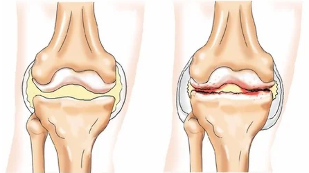
Of the disease, allowing irradiation of the pain in the knee:
- Coxarthrosis of the hip – chronicle of the defeat of the hip joint, accompanied by the gradual loss of the degeneration and the degenerative changes in him. Often, the pain extends towards the bottom on the outer surface of the thigh up to the knee or below.
- The neuropathy of the sciatic nerve – a non-inflammatory damage to the caluire-et-resulting from the compression of compression or spazmirovannah of the blood vessels. This nerve comes to feet, starting in the lumbar region, passing through the tailbone and pelvis. A blockage of one point while it leads to disruption of the sensitivity or throbbing pain.
- Fibromyalgia – extra-articular soft tissues non-inflammatory nature with a set of symptoms in the form of arthralgia, muscular weakness, depression, etc
Certain systemic diseases, leading to pain in the knees:
- Osteoporosis is a bone disease chronic progressive of the current, modifying the composition and density of the bone. "Leaching of calcium from the bones leads to their fragility. The process is accompanied by pain or aching pains in the limbs.
- Tuberculosis of the bones. Tuberculosis the defeat of the phase of the os leads to a strong pain.
- Osteomyelitis is an infectious disease, the inflammatory nature, affecting all the elements of structure of the bone. The specific outcome, e.g., tb, and non-specific, often coccal, osteomyelitis is a reddening of the skin, swelling, local pain in the bones and the muscles, a feverish temperature.
- Some infectious diseases. In Reiter's syndrome, in addition to the involvement in the process of the genito-urinary food and the mucosa of the eyes, astonish the joints. One of the manifestations of Lyme disease is arthralgia.
Types of pain in the knees
According to the etiology of the nature and the intensity of the pain can be different.
- Throbbing. Arthritis, osteoarthritis.
- Acute, strong. In the case of illness of the elements of the knee, rupture of ligaments, bursitis, a knee contusion, exacerbation of miniscope, deforming osteoarthritis.
- Exciting. During the execution of the deforming osteoarthritis, injuries of the meniscus.
- Drill. When the osteomyelitis.
- Dull. When the bursitis, chronic disease Legg.
- Of the furnace. During the compression of the sciatic nerve, the tuberculosis process in the os.
- Shooting. When the interference of the trunk nervous.
- The pain when walking. When the cyst, Baker, bursitis, arthritis, gonarthrosis, periarthritis.
- The pain at rest. In gout, arthritis.
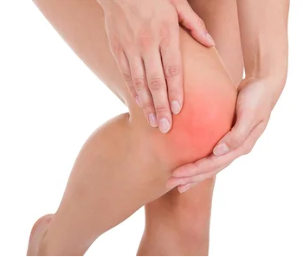
The diagnosis of the pathologies causing pain in the knees
Fizikalna survey:
- the collecting of the anamnesis and complaints;
- the visual inspection of palpation of the knee.
Laboratory studies:
- biochemical and clinical analyses of blood;
- the tests for serological research of blood;
- immunological analysis of blood;
- rheumatology the samples d';
- the bacteriological analysis of synovial fluid.
Invasive instrumental methods:
- arthroscopy;
- the puncture of the joint capsule;
- biopsy of the bone.
Non-invasive instrumental diagnosis:
- the x-ray of the knee joint;
- densitometry directs;
- ultrasound of the joint;
- MRI or CT.
Treatment of pain in the knees
If the pain in one or both knees non-traumatic nature of the onset, it is appropriate to first contact your general practitioner, who, on the basis of the patient's complaints and the results of the physical examination, forward them to the narrow specialist, orthopedist, rheumatologist, recital or a neurologist. In any knee injury, you should contact a ben the ado or trauma-orthopedic.
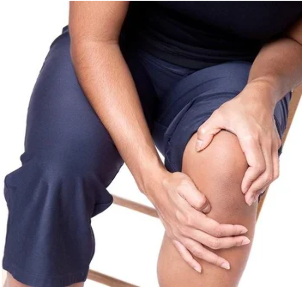
The treatment in each case is different, depends on the cause of the pain, it is the appearance of the injury or disease. For each disease, there is a system of treatment. But to begin with, the patient should comply with some general rules:
- significantly reduce the duration of the trek and find feet during the day;
- the athletes temporarily (until the healing) waive the training, and of the ordinary people of the race or jump;
- when the amplification of the pain completely abandon the movement, to impose on the knee of fixation of the cuff of the band lastique;
- wear a brace or a bandage for the immobilization of the knee joint;
- when the injury cold to the site of the traumatic impact.
Rheumatoid arthritis, psoriatic arthritis, systemic autoimmune diseases of the disease need of serious treatment, organized for many months. Basic treatment consists of immunosuppressive drugs, non-steroidal anti-inflammatory drugs and hormonal drugs, drugs, gold, etc
When the treatment of bursitis apply the analgesic and anti-inflammatory drugs. If it is detected an infection, the course of antibiotics. Therapeutic puncture bags practiced to remove excess fluid from the synovial cavity and/or the introduction of a corticosteroid. The chronic inflammation of a bursa helps to get rid of the operation – the surgical excision of the stock exchange synovium.
Deforming osteoarthritis effective intra injection of glucocorticoids prolonged use of NSAIDS and chondroprotectors. To relieve the pain locally prescribed with compresses with dimexide or bichofite, ointments and gels with anti-inflammatory properties. Help the massage, physiotherapy, gymnastics, medical. Serious lesions of the knee joint require surgical replacement of the joint.
The treatment of osteoporosis is to intake bisphosphonates, calcitonin, calcium preparations, vitamin D, etc ...
The treatment of the fracture of the meniscus can be conservative or surgical. Conservative treatment consists of the application of analgesics, NSAIDS, hyaluronic acid, chondroprotectors. But, first, occur, repositioning of the joint.
Types of intervention:
- meniscectomy;
- partial (incomplete) of a meniscectomy;
- transplantation of meniscus;
- arthroscopy;
- arthroscopic stapling of a torn meniscus.
In any knee injury after treatment very important for the period of rehabilitation, which must take place under the control of the reabilitologa or an orthopedist. The doctor will be the best program of recovery of function of the joint. The principal techniques of rehabilitation postoperative are considered such as massages and gymnastics, medical. Also effective courses on simulators, develop gradually the knee joint.













































